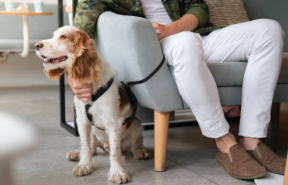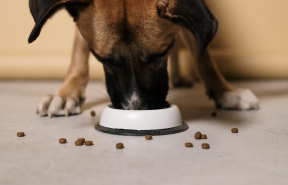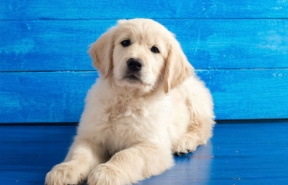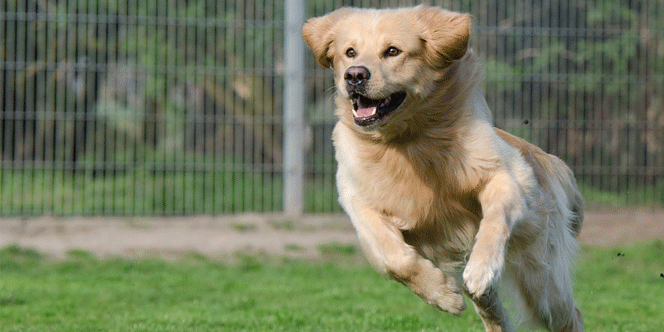There are many aspects involved in training for flyball. If you wish to begin training your dog for flyball it is wise to take a structured approach. Your dog will need to become familiar with his team mates, cope with noise and other distractions, be physically fit, retrieve a ball, jump hurdles…just to mention the basics.
In fact, there is too much for us to cover in enough detail in one issue of Active Dog. In this issue we will concentrate on introducing the flyball box.
Step one: Is your dog right or left oriented?
Modern flyball boxes have two holes. This is because dogs, similar to people, are left or right oriented. Some dogs will predominantly turn to the left and others to the right. To determine which way your dog turns place a tennis ball on the ground a few metres away from it. Hold your dog by the collar facing towards the ball. Release your dog and ask him to retrieve the ball. Note which way the dog turns as he picks up the ball. Repeat this ten times keeping note as you go. Your dog will have turned one way more often than the other and this is the direction you will train your dog to turn off the flyball box.
Step Two: Tightening the turn.
When your dog turns off the flyball box it is important that the turn is quick and tight. Lingering at the flyball box or turning widely will cost your team valuable time.
To teach your dog to turn tightly you will need a turning board and a plastic cone or pole. A turning board is a piece of equipment that resembles a flyball box without the holes. The turning board can be placed flat on the ground and then raised gradually as the dog becomes more competent.
Start with the cone in front of the turning board. Lure your dog around the cone. Click and reward as he turns tightly off the board in a movement similar to a "swimmer's turn". Repeat this step until your dog can reliably turn off the board at a distance of one metre from you. This may take several training sessions.
Step Three: Introducing the flyball box
If your dog naturally turns to the right place a tennis ball in the corresponding hole of the flyball box.
Position the plastic cone in front of the flyball box . Hold your dog by the collar in front of the box while encouraging him to focus on the ball. Let go of his collar and send him around the cone to retrieve the ball. Reward him as he takes the ball from the box. Repeat this step over several training sessions. Reward for tight turns only. As your dog's skill level increases remove the plastic cone .
Next edition we will talk about hurdling and how to assemble a winning flyball team.
Step Three: Introducing the flyball box
If your dog naturally turns to the right place a tennis ball in the corresponding hole of the flyball box.
Position the plastic cone in front of the flyball box . Hold your dog by the collar in front of the box while encouraging him to focus on the ball. Let go of his collar and send him around the cone to retrieve the ball. Reward him as he takes the ball from the box. Repeat this step over several training sessions. Reward for tight turns only. As your dog's skill level increases remove the plastic cone .
Next edition we will talk about hurdling and how to assemble a winning flyball team.













